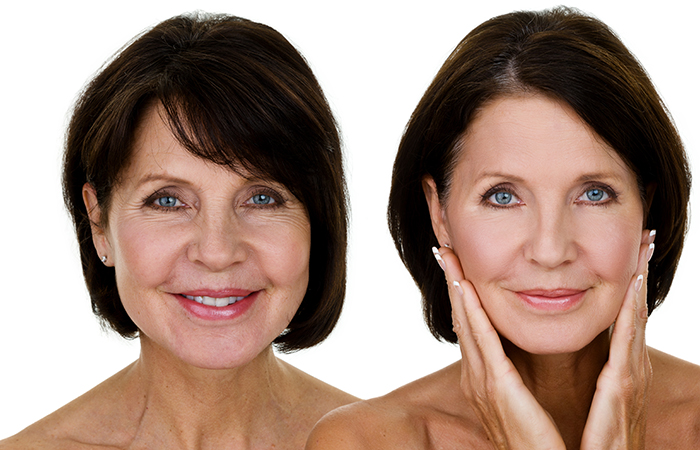From Botox to Facelifts – What You Need to Know

With the latest dermatologist-administered therapies, you can see real improvements to your skin’s tone, texture, elasticity, and firmness. However, if your goal is to turn back the clock on aging, facial rejuvenation treatments and procedures may let you down.
“It’s impossible to make someone look like they did 20 years ago,” says Brian Morrison, M.D., a dermatologist with the University of Miami Health System. “That said, cosmetic treatments are a wonderful option for patients who aim to slow the aging process.”
Facial cosmetic enhancements are such a personal choice. Talk to your doctor about your desired outcomes and concerns. Discuss realistic expectations, risks, recovery time, and costs.
Together, you and your doctor can determine the best procedure for your age, skin condition, personal needs, and goals. You should feel supported throughout the process, from your initial visit through follow-up care.
What’s the latest in skin rejuvenation?
There are many approaches, ranging from prescription-strength creams and peels, skin resurfacing lasers, and injectable fillers to the minimally invasive “thread lift” procedure and plastic surgery options.
Treatment options offered by UHealth’s dermatology clinic include:
- Chemical peels — increase collagen in the skin and treat acne with minimal downtime; many in-office peels are safe for persons of color.
- Non-ablative skin resurfacing laser — stimulates collagen to correct fine wrinkles.
- Intense pulsed light — uses light to remove dark spots, freckles, wrinkles, and spider veins; safe for light skin types only.
- Infrared light therapy — reduces sun damage, pigment spots, and vessels.
- KTP/NdYAG laser — treats rosacea, redness, pigmented skin lesions, vascular lesions, and laser hair removal; safe for use on dark skin types
- Botulinum toxin (Disport, Botox, Xeomin, and Jeuveau products) — prevents wrinkle formation and diminishes existing wrinkles over time.
- Injectable fillers (Scupltra, Radiesse, Juvaderm, Restylane products) — provide structure to underlying skin; primarily used in areas of fat and bone loss that develop with aging.
- Micro needling — uses tiny needles to reduce hyperpigmentation and stimulate collagen and elastin production to reduce textural skin concerns; safe for all skin types.
- Platelet-rich plasma — uses blood plasma to improve cell turnover and collagen growth or regrow hair; can be conducted with or without micro-needling.
- Kybella — an injectable that reduces fat below the chin or “double chin.”
- Thread lift — a less invasive, temporary alternative to facelifts; can stimulate collagen in the skin.
Surgical options offered by various UHealth clinical departments include:
- Blepharoplasty (conducted at UHealth’s Bascom Palmer Eye Institute) — eyelid surgery that removes fat from upper and lower lids to correct drooping and puffy bags
- Facelift — (conducted by UHealth plastic surgeons) surgery that smooths loose skin, tightens underlying tissues and removes excess fat.
- Forehead or brow lift — (conducted by UHealth plastic surgeons) surgery that alters the muscles and skin to smooth the forehead, raise upper eyelids, and minimize frown lines.
- Neck lift — (conducted by UHealth plastic surgeons) surgery that reshapes and tightens the neck, elongating and improving tone.
What kind of results do people see?
Patients who understand that the goal is to age gracefully are the ideal candidates for these treatments. “Our practice aims for a natural aesthetic result,” Dr. Morrison says. “Nothing we do is so drastic that a patient doesn’t recognize him or herself.”
Some dermatologist-administered therapies, such as fillers and thread lifts, produce immediate results that fade over time. Others, like botulinum toxin, take time to kick in. The full effect may not be seen until one to two weeks after the procedure. Some treatments take time and multiple treatments, usually two to three, to produce visible results.
These treatments include those that stimulate collagen, such as micro-needling, lasers, and chemical peels, and Kybella, which dissolves fat over several treatments.
“Nearly all of these cosmetic procedures require maintenance and repeat treatment over the years,” Dr. Morrison says. “Patients continue to age and require regular tune-ups every 3 to 12 months.”
What is the recovery like?
“With most of our non-surgical procedures, swelling and/or redness can last about one week or less, so the downtime is minimal,” Dr. Morrison says. “The risks vary greatly between procedures and should be discussed with your doctor.”
How much does facial rejuvenation cost?
These elective cosmetic procedures are not covered by health insurance. “They can be pricey, depending on what you choose to do,” says Dr. Morrison. Most comprehensive aesthetic visits cost $1,000 to $3,000. Some procedures, such as laser and micro needling, are less expensive. However, they require multiple treatments that add up over time.
Even though you may want to make changes to your appearance, “we never want a patient to spend more than he or she can afford,” Dr. Morrison says. “We provide guidance and recommendations to help them prioritize the procedures that will make the biggest impact in their appearance or maximize their long-term results.”
Learn more about your options. Call 305-243-2190.
Dana Kantrowitz is a contributing writer for UMiami Health News.
Tags: cirugía plástica facial y reconstructiva, dermatología, Dr. Brian Morrison
